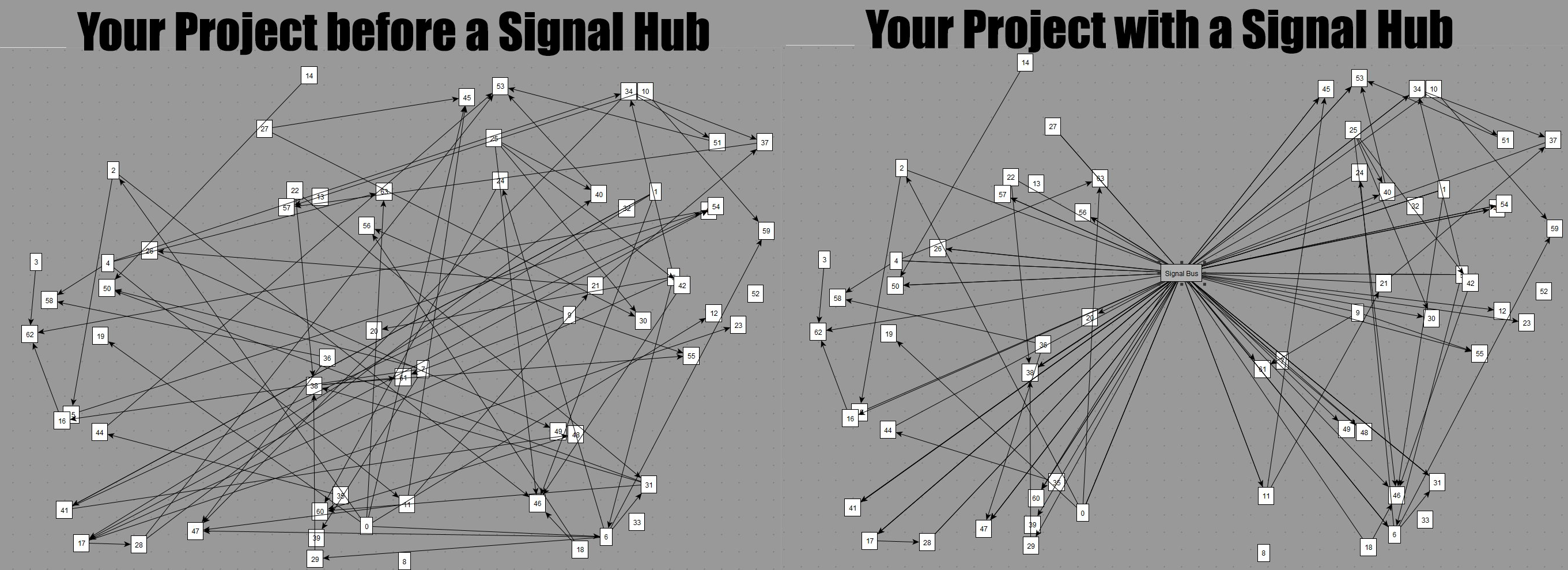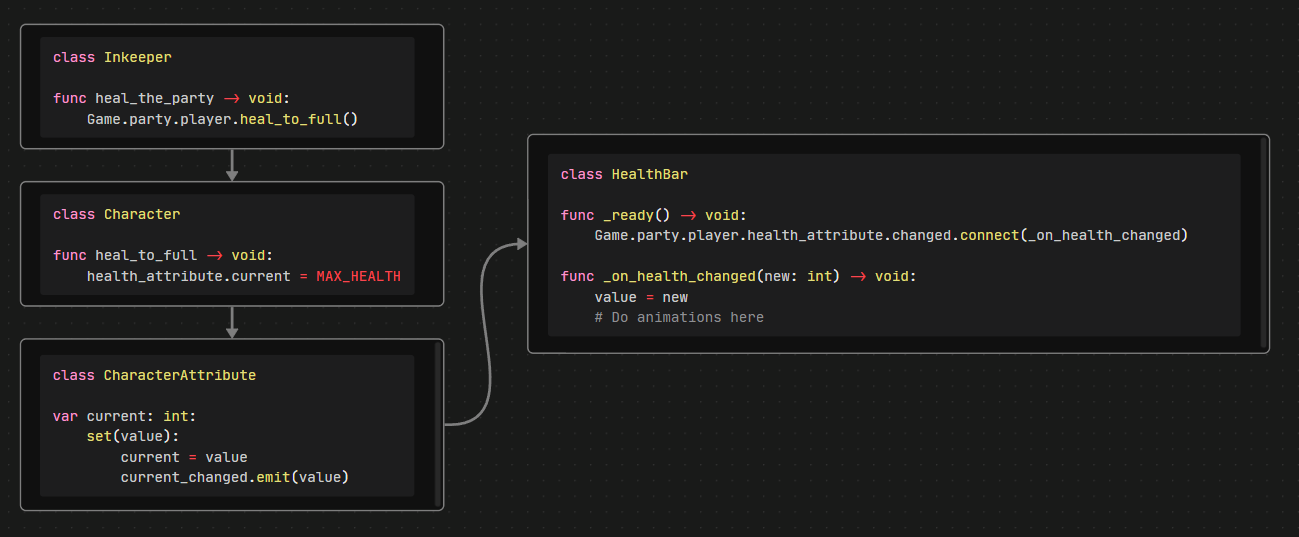A banned pattern is a programming or design pattern, or engine feature, which I have banned from use in all my own projects. Usually this is first and foremost, because I wasn’t using them to begin with.
Despite the name, you should feel free to still use these features for: Leaning, prototyping, gamejams, and maybe even smaller games and vertical slices. Get the job done first. Just be aware that by using these things, you invite more work.
What is a Signal Hub?
The Signal Hub is a popular pattern in Godot, proposed as a means of decoupling objects and allowing you to sidestep the scene hierarchy for node to node communication. Signals themselves are nothing but delegeate/events from C#, or similar anonymous function call subscription patterns.
How are they used?
The typical Signal Hub is an Autoload script which contains a list of signals. This publicly exposes all signals to all objects in the engine. Creating one common point of communication.
Why are they banned?
-
Messy Signals Hubs move connections to one location. Where previously only objects A and B were coupled, now the coupling extends through A → C → B, with C being visible to an infinite number of other objects that aren’t part of the responsibilities of A or B. Or in other words: All the spaghetti, now goes through a single knot. Spitting the plate into two half servings of spaghetti where the ends have all been stuck into the same meat ball.
-
Global As per SOLID principles, making things global should generally avoided. A Signal Hub expressly globalizes signals that would otherwise be private to the relevant parties. It thus breaks several of SOLID design practices at the same time.
-
Redundant The Signal Hub is a Band-Aid pattern. While it solves an immediate problem, how to access objects in separate parts of the SceneTree, it can easily be avoided through hierarchical design, dependency injection, and Event/Messaging systems.
The following is an humorous example of the effect a Signal Hub has on project organization:

This is an image of a possible Object Hierarchy in a Game:

And these are the underlying Function and Signal calls:

Note how the Player Characters Health Attribute is emitting a signal. And how the Interface’s HUD’s HealthBar is connecting to the signal. This is possible because Game is a Singleton which is Globally accessible, and which in turn provides an API for accessing the Party, which in turn has exposed the Player Character and its Public member functions.
Things to research:
Signal Hubs are often confused for Messaging or Even systems, as well as Command Queues.
While these can fulfill similar purposes, there is a distinct different:
Instead of one global location holding dozens of individual signals. You may have one global location holding a single signal.
Consider this example:
class MessageServer
signal message_sent(message: Message)
func send_message(message: Message) -> void:
message_sent.emit(message)
class Message
var sender: Object
func _init(_sender: Object) -> void:
sender = _sender
class MainMenu
func _on_start_game_pressed() -> void:
var m: StartGameMessage = StartGameMessage.new(self)
m.character_name = name_field.text
MessageServer.send_message(m)
class SomethingThatListensToMessagesIDontKnowWhat
func _init()-> void:
MessageServer.message_sent.connect(_on_message_sent)
func _on_message_sent(m: Message) -> void:
if m is StartGameMessage:
print("A new game is starting! Lets do something!")